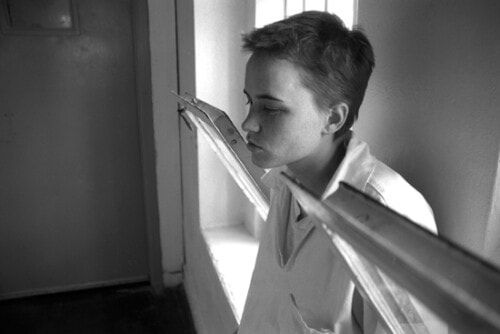Emotions in the Classroom
As university teachers, even in the humanities, we have traditionally trafficked exclusively in reason and intellect. Recently, there has been a great deal of attention paid to the fact that the classroom is a space dense with intense emotion, one whose status as public or private is constantly shifting. This is not a brand new idea. Aristotle recognized the emotional undercurrents of teaching, and so did William James; but it is an idea that has remained, and still remains, more theoretical than practical. Theory has seldom become practice, it seems to me, because there is a simple and obvious oversight in most of the theory, a practical hurdle: the personalities of the teachers and students. How can a theory account for the personal and idiosyncratic dispositions of actual teachers and actual students that determine the emotional dynamics of any classroom? The answer may be that it cannot – not always.
No matter what the course material, no matter how decentered or how traditional the approach, the particular dynamic between public and private in any classroom is shaped most forcefully by the disposition of the teacher at its center. And the shape of that dynamic determines both the kind and degree of impact of the course material on students. The personal dimension of emotion – the interpersonal peaks and valleys among students or between students and teachers; or the boredom, confusion, titillation, or inspiration elicited by course materials – passes just under the radar of most theories of pedagogy.
Some of the most interesting work that has attempted to tackle the question focuses on transference, borrowing the psychoanalytic term to describe the often unacknowledged emotional undercurrents that shape intellectual exchange (see Felman, Finke, Penley, Jay, Briton). In the words of Laura Finke, “An analysis of transference may enable us to unpack the workings of authority – both real and imagined – in the classroom by moving our attention away from the content of teaching – the exchange of signifieds – and toward the dramas of identification and resistance that accompany the exchange of signifiers” (130). This is exactly what Wayne did, eschewing the ritualized exchange of signifieds and focused instead on inspiring his students to think for, and, most importantly, as themselves. Transference is not the misattribution of emotions experienced in the past onto present experience – mistaking a teacher for a parent, for example. It is the mechanism through which we shape present experience when we approach it as people shaped by previous experience. Transference is not a problem to be avoided or overcome but an inevitable aspect of emotional experience, particularly when relations of authority or power are involved. Finke is describing a feminist classroom, and I believe feminist classrooms have come closest to acknowledging the personal dimension of emotions that suffuse intellectual exchange. I am ready to be persuaded by her suggestion that a productive theory of pedagogy ought to focus on “dramas of identification” – on making transference a productive element of classroom exchange. After all, it seems at least anecdotally true that students tend to remember the teacher more vividly than what is taught. But in my own education, the teachers who managed to combine course content with course dynamics are the ones who inspired me. When I look back on Wayne’s course, I recall morbid or moving details from Keats’s letters because I associate them, almost uncannily, with my professor’s vivid sense of style. You can teach classroom dynamics on a theoretical level – you can ask teachers to be attentive to their own and their students’ moments of transference – but the lesson pales in the face of the actual emotional and intellectual disposition of the person shaping the classroom dynamic. You can’t teach personality.



